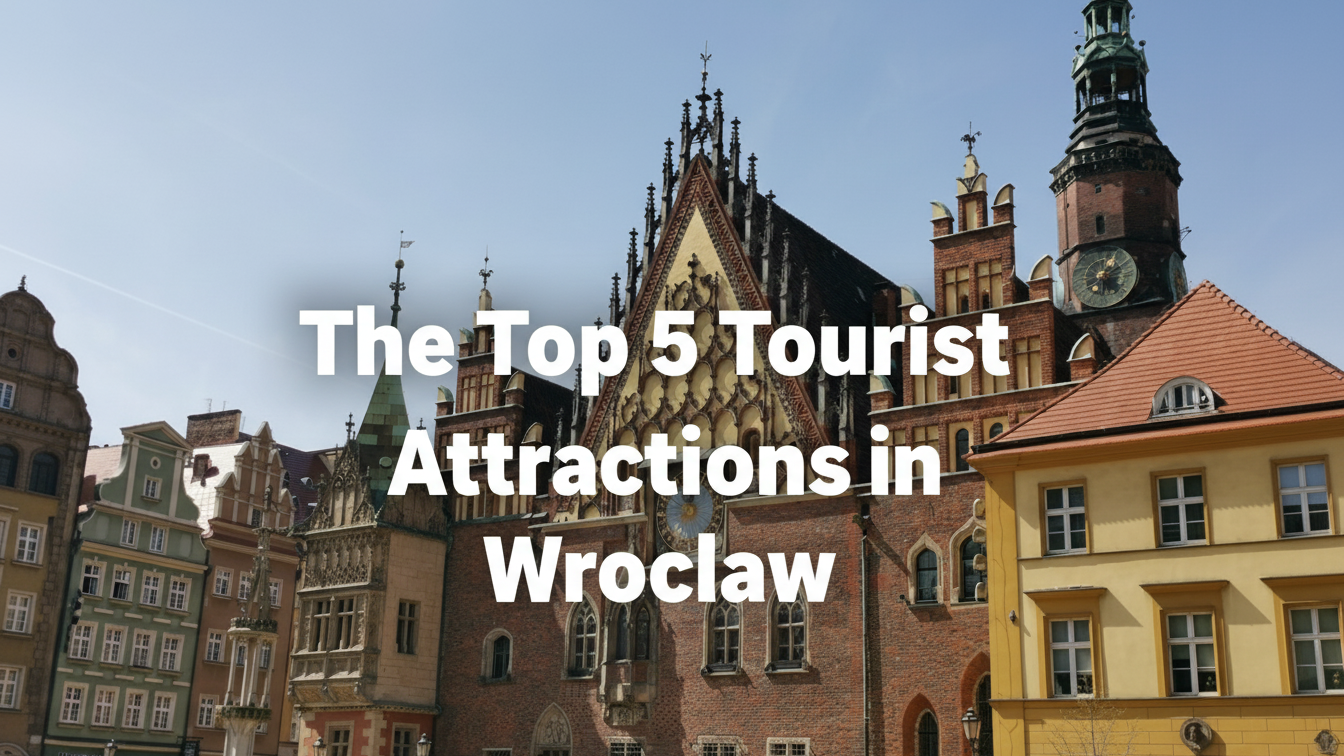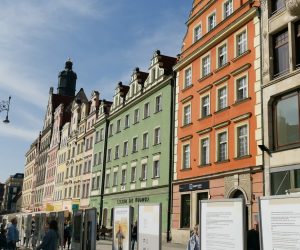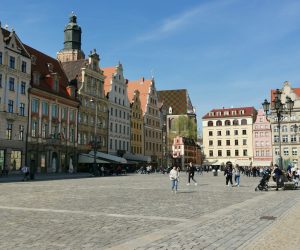Southwest Poland is home to the charming metropolis of Wroclaw. With about 640,000 residents, it is the fourth-largest metropolis in the nation. The city has a vibrant past and culture, which is reflected in its stunning buildings, galleries, and monuments.
The magnificent market plaza in Wroclaw, one of the biggest in all of Europe, is well known. The plaza is the ideal place to unwind and take in the energy of the city because vibrant structures, cafes, restaurants, and stores surround it. The Racawice Panorama, the Wrocaw Zoo, and the Cathedral of St. John the Baptist are some of the other well-known sights in Wroclaw.
Wroclaw is a vibrant, modern metropolis in addition to being significant historically and culturally. There are several universities there, including the oldest and most renowned university in Poland, the University of Wroclaw. The city also has a flourishing music and arts scene, with a year-round calendar of festivals and events.
Whether you are interested in history, culture, or contemporary urban life, Wroclaw is a stunning and vibrant metropolis that has something to offer everyone. In this article, we will give you five tourist attractions you should do or see while visiting Wroclaw.
Market Square in Wroclaw, Poland
The hub of Wroclaw is the Market Square, or Rynek in Polish. It is one of the biggest market squares in all of Europe, and tourists who come to the city must explore it for its vibrant atmosphere and magnificent architecture.
The plaza was first utilized as a marketplace in the thirteenth century. With cafes, eateries, and stores lining its edges, it is now a hive of activity. Visitors can taste traditional Polish food, look through local handicrafts, or just relax and people-watch while sipping beer or coffee.
The Gothic-style Town Hall, which occupies the western side, is one of the square’s most recognizable structures. The tower’s summit is accessible to visitors who want to see the entire metropolis. The vibrant tenement houses that border the square are also noteworthy structures, and many of them have been painstakingly restored to their former splendor.
A Christmas market, an Easter fair, and a flower market in the spring are just a few of the festivals and events that take place in the plaza throughout the year. The Market Square is a must-see sight in Wroclaw, whether you go during the day or at night.
2. Visit Ostrow Tumski in Wroclaw, Poland
On an island in the Oder River, Wroclaw’s Ostrow Tumski neighborhood is an ancient area. With a history that goes back more than a thousand years, it is regarded as the oldest portion of the city.
The Cathedral of St. John the Baptist, which serves as the archbishop of Wroclaw’s residence, is one of several important religious structures that can be found in the area. The cathedral, which was constructed in the thirteenth century, has a magnificent Gothic exterior and an opulent interior.
The Church of St. Martin, the Church of the Holy Cross and St. Bartholomew, and other noteworthy structures can be found in Ostrow Tumski. A collection of sacred artwork and artefacts can be found at the Archdiocese Museum, which is located in the neighborhood.
Visitors to Ostrow Tumski can stroll the winding streets and take in the stunning architecture, or they can join a tour to learn more about the area’s past. The area is especially beautiful at night, when the structures are lit up and the air is calm and romantic. In general, anyone visiting Wrocaw should check out Ostrow Tumski.
3. Visit Wroclaw University, Poland
One of Poland’s oldest and most esteemed colleges is Wroclaw University. It was established in 1702 and has a lengthy history of academic excellence, making it one of the best universities in the nation.
The university provides a broad range of programmes through a number of faculties, including the faculties of arts and humanities, law, administration, and economics, natural sciences, and social sciences. The Institute of Philosophy and Sociology, the Institute of Mathematics, and the Institute of Environmental Sciences are just a few of the study institutes and centers that call it home.
Students at the institution come from all over Poland and the globe, making up a diverse student body. It has generated a number of notable alumni, including former Polish president Lech Wasa and Nobel Prize-winning physicist Philipp Lenard. It is renowned for its high standards of instruction and research.
The university campus in Wrocaw, which has several historic structures and lovely green areas, is open to visitors on guided tours. The university is a must-see attraction for anyone interested in learning more about the history and culture of Wroclaw, whether they are students, researchers, or merely tourists.
4. Panorama of the Battle of Racławice, Poland
The famous battle that took place on April 4, 1794, is depicted in the Panorama of the Battle of Racawice, a one-of-a-kind and magnificent piece of art. One of Wroclaw, Poland’s most visited tourist destinations, the painting is kept in a specially constructed circular building.
To mark the Battle of Racawice’s 100th anniversary, a group of artists under the direction of Jan Styka and Wojciech Kossak produced the artwork. The painting, which has dimensions of 15 meters in height and 114 meters in circumference, is on exhibit in a spherical space intended to give it a 3D appearance.
An immersive multimedia presentation that describes the battle’s importance and historical context is available to panorama visitors. Visitors are transported back in time by the painting’s impressive size and level of detail, which gives them the impression that they are actually standing on the battlefield.
For anyone interested in history, art, or Polish culture, the Panorama of the Battle of Racawice is a must-visit site. It is a symbol of the artistic and technological advancements of the late 19th century and is still cherished today.
5. Centennial Hall in Wroclaw, Poland
In the center of Poland’s Wroclaw is the extraordinary structure known as Centennial Hall. To mark the 100th anniversary of Napoleon’s loss at the Battle of Leipzig, Max Berg created the hall, which was constructed in 1913. It was one of the very first structures ever built using reinforced concrete and is now a UNESCO World Heritage Site.
A large dome with a 65-meter diameter that is sustained by reinforced concrete arches makes up the hall’s unique architecture, a masterpiece of modernist design. It has hosted everything from sporting events and concerts to trade shows and political rallies because it was designed to be a multi-use venue for a range of events.
Centennial Hall is a beloved cultural landmark and a well-liked tourist destination in Wroclaw today. Visitors can take a guided tour of the hall to learn more about its intriguing past and to take in its stunning architecture. It continues to be a significant cultural center for the city, holding a variety of occasions all year long.














